Do you tend to get lost or relying on maps? Augmented reality (AR) is here to revolutionize navigation and wayfinding for you! With real-time directions, interactive navigation, and enhanced route planning, AR can offer you a personalized wayfinding experience like never before.
Say goodbye to confusion and hello to an immersive and dynamic way of finding your way around. Let AR be your guide, and watch as it transforms the way you navigate the world.
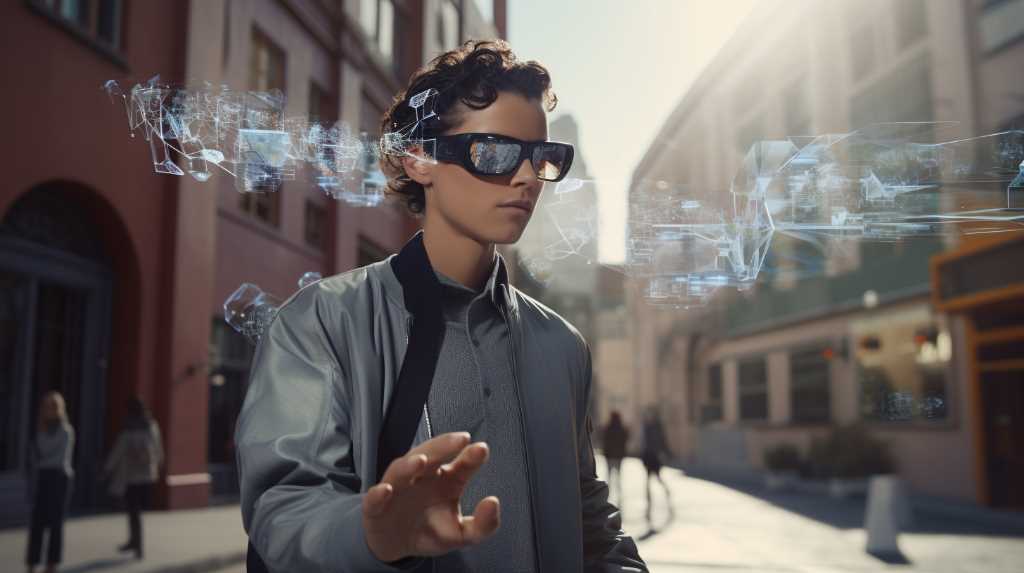 You can receive real-time directions through augmented reality (AR) technology. With AR, navigating unfamiliar places becomes easier and more efficient. Imagine walking down a crowded city street, trying to find a specific location. Instead of constantly referring to a map or GPS on your phone, AR allows you to simply look through your device's camera and see virtual, interactive directions overlaid on the real world. This means you can keep your eyes on the surroundings while receiving step-by-step guidance.
AR navigation apps, such as Google Maps or Apple Maps, use the power of AR to provide you with an immersive and intuitive navigation experience. They can show you arrows or markers on the screen, indicating the direction you should go, as well as distance indicators to let you know how far away your destination is. Some apps even use visual cues, like virtual signs or landmarks, to help you make turns or identify points of interest.
Not only does AR technology provide real-time directions, but it can also adapt to your movements and update the directions accordingly. For example, if you miss a turn, the AR navigation app will quickly recalculate the route and guide you back on track. This dynamic feature ensures that you always have the most accurate and up-to-date directions available.
You can receive real-time directions through augmented reality (AR) technology. With AR, navigating unfamiliar places becomes easier and more efficient. Imagine walking down a crowded city street, trying to find a specific location. Instead of constantly referring to a map or GPS on your phone, AR allows you to simply look through your device's camera and see virtual, interactive directions overlaid on the real world. This means you can keep your eyes on the surroundings while receiving step-by-step guidance.
AR navigation apps, such as Google Maps or Apple Maps, use the power of AR to provide you with an immersive and intuitive navigation experience. They can show you arrows or markers on the screen, indicating the direction you should go, as well as distance indicators to let you know how far away your destination is. Some apps even use visual cues, like virtual signs or landmarks, to help you make turns or identify points of interest.
Not only does AR technology provide real-time directions, but it can also adapt to your movements and update the directions accordingly. For example, if you miss a turn, the AR navigation app will quickly recalculate the route and guide you back on track. This dynamic feature ensures that you always have the most accurate and up-to-date directions available.
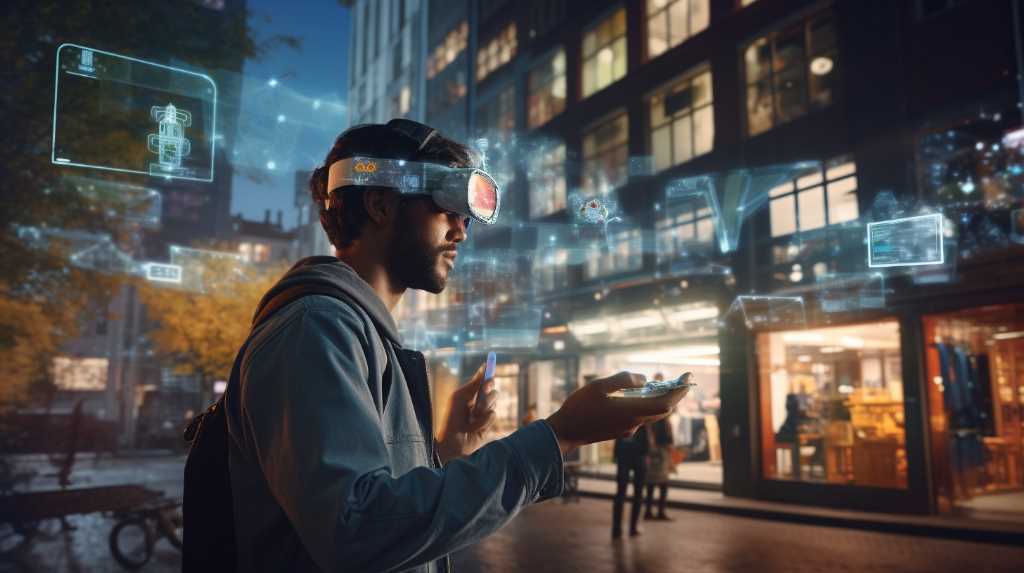 AR technology enhances navigation and wayfinding by providing interactive features that allow you to actively engage with your surroundings. With interactive navigation, you have the ability to interact with virtual elements superimposed on the real world, making your navigation experience more immersive and intuitive.
One of the key features of interactive navigation is the ability to access additional information about your surroundings. For example, when you point your device at a landmark or a building, AR can provide you with real-time information about its history, opening hours, or even reviews from other users. This allows you to make more informed decisions and enhances your overall navigation experience.
Another interactive feature of AR navigation is the ability to customize your route. You can choose to add waypoints, avoid certain areas, or even explore alternate routes. This level of customization gives you more control over your navigation and allows you to plan your journey according to your preferences or specific needs.
Furthermore, interactive navigation can also provide you with real-time feedback and guidance. AR overlays can highlight points of interest, direct you towards the correct path, or even provide step-by-step instructions. This interactive guidance ensures that you stay on track and reach your destination efficiently.
AR technology enhances navigation and wayfinding by providing interactive features that allow you to actively engage with your surroundings. With interactive navigation, you have the ability to interact with virtual elements superimposed on the real world, making your navigation experience more immersive and intuitive.
One of the key features of interactive navigation is the ability to access additional information about your surroundings. For example, when you point your device at a landmark or a building, AR can provide you with real-time information about its history, opening hours, or even reviews from other users. This allows you to make more informed decisions and enhances your overall navigation experience.
Another interactive feature of AR navigation is the ability to customize your route. You can choose to add waypoints, avoid certain areas, or even explore alternate routes. This level of customization gives you more control over your navigation and allows you to plan your journey according to your preferences or specific needs.
Furthermore, interactive navigation can also provide you with real-time feedback and guidance. AR overlays can highlight points of interest, direct you towards the correct path, or even provide step-by-step instructions. This interactive guidance ensures that you stay on track and reach your destination efficiently.
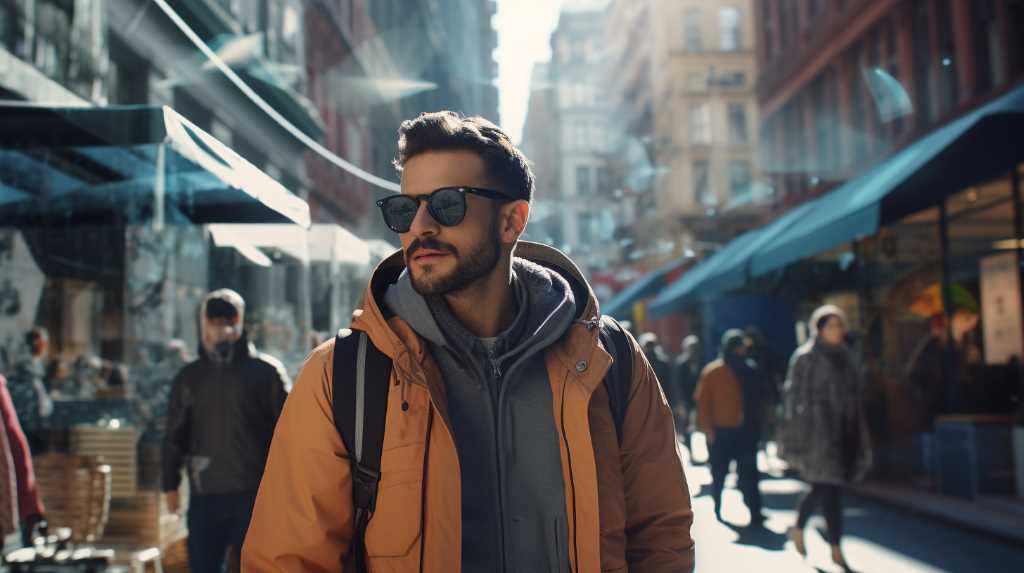 With AR technology, you can gain a better understanding of your physical surroundings and navigate with enhanced spatial awareness. Augmented Reality allows you to overlay digital information onto the real world, providing you with a more immersive and interactive navigation experience. By using your smartphone or wearable device, you can access real-time information such as directions, points of interest, and even virtual road signs that appear directly in your line of sight. This not only helps you navigate more efficiently but also increases your awareness of the surrounding environment.
AR technology can enhance your spatial awareness by providing you with 3D visualizations of your surroundings. For example, when walking in a new city, you can use AR to see virtual arrows pointing you in the right direction, or even virtual footprints guiding you along a specific path. This interactive navigation experience allows you to better understand the layout of the area and make informed decisions about which direction to go.
Moreover, AR technology can also assist you in locating specific objects or places within your physical surroundings. For instance, you can use AR to find the nearest coffee shop or locate a specific store in a shopping mall. By overlaying this information onto your real-world view, AR helps you navigate more efficiently and saves you time and effort.
With AR technology, you can gain a better understanding of your physical surroundings and navigate with enhanced spatial awareness. Augmented Reality allows you to overlay digital information onto the real world, providing you with a more immersive and interactive navigation experience. By using your smartphone or wearable device, you can access real-time information such as directions, points of interest, and even virtual road signs that appear directly in your line of sight. This not only helps you navigate more efficiently but also increases your awareness of the surrounding environment.
AR technology can enhance your spatial awareness by providing you with 3D visualizations of your surroundings. For example, when walking in a new city, you can use AR to see virtual arrows pointing you in the right direction, or even virtual footprints guiding you along a specific path. This interactive navigation experience allows you to better understand the layout of the area and make informed decisions about which direction to go.
Moreover, AR technology can also assist you in locating specific objects or places within your physical surroundings. For instance, you can use AR to find the nearest coffee shop or locate a specific store in a shopping mall. By overlaying this information onto your real-world view, AR helps you navigate more efficiently and saves you time and effort.
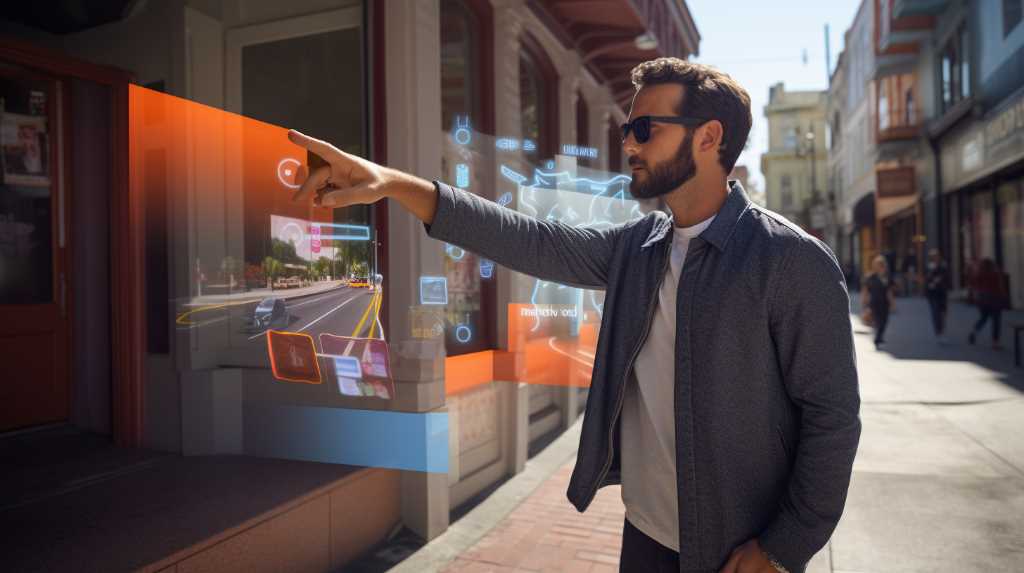 By using augmented reality technology, you can easily identify points of interest in your surroundings. Augmented reality (AR) applications can provide you with real-time information about nearby points of interest, such as restaurants, landmarks, hotels, and shops. These applications use your smartphone or AR glasses to overlay digital information onto the real world, making it easier for you to find what you're looking for.
With AR, you no longer have to rely on traditional maps or search engines to find points of interest. Instead, you can simply point your device at your surroundings, and relevant information will appear on your screen. For example, if you're in a new city and want to find a good restaurant, you can use an AR app to see the names, ratings, and menus of nearby restaurants overlaid onto the real world.
Furthermore, AR can enhance your point of interest identification by providing additional context and details. For instance, you can learn about the history of a landmark by simply pointing your device at it. AR can also provide you with directions and navigation cues, making it easier for you to reach your desired point of interest.
By using augmented reality technology, you can easily identify points of interest in your surroundings. Augmented reality (AR) applications can provide you with real-time information about nearby points of interest, such as restaurants, landmarks, hotels, and shops. These applications use your smartphone or AR glasses to overlay digital information onto the real world, making it easier for you to find what you're looking for.
With AR, you no longer have to rely on traditional maps or search engines to find points of interest. Instead, you can simply point your device at your surroundings, and relevant information will appear on your screen. For example, if you're in a new city and want to find a good restaurant, you can use an AR app to see the names, ratings, and menus of nearby restaurants overlaid onto the real world.
Furthermore, AR can enhance your point of interest identification by providing additional context and details. For instance, you can learn about the history of a landmark by simply pointing your device at it. AR can also provide you with directions and navigation cues, making it easier for you to reach your desired point of interest.
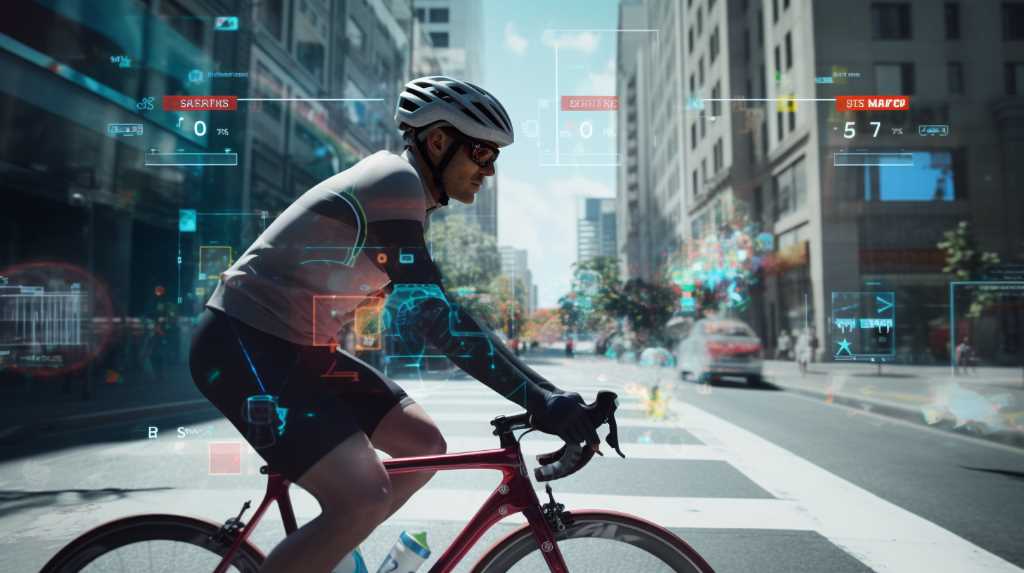 You can now experience more efficient and accurate route planning by using augmented reality technology. Augmented reality (AR) enhances route planning by providing real-time visual information and guidance on your surroundings. With AR, you can view your intended route overlaid on the real world, allowing for better understanding and visualization of your journey.
One of the key benefits of AR in route planning is the ability to see alternative routes and compare them in real-time. By simply pointing your device towards your destination, AR can display multiple route options, taking into account factors such as traffic conditions, road closures, and even weather conditions. This allows you to make informed decisions on the best route to take, saving you time and avoiding unnecessary delays.
AR also enhances route planning by providing contextual information along your journey. As you navigate, AR can display relevant points of interest, such as landmarks, restaurants, and gas stations, enabling you to make pit stops or explore nearby attractions without deviating too far from your original route.
Furthermore, AR can provide live navigation instructions through visual cues overlaid on the real world. Instead of relying solely on audio instructions, AR can project arrows, street names, and distance markers directly onto the road or buildings, ensuring that you never miss a turn or exit.
You can now experience more efficient and accurate route planning by using augmented reality technology. Augmented reality (AR) enhances route planning by providing real-time visual information and guidance on your surroundings. With AR, you can view your intended route overlaid on the real world, allowing for better understanding and visualization of your journey.
One of the key benefits of AR in route planning is the ability to see alternative routes and compare them in real-time. By simply pointing your device towards your destination, AR can display multiple route options, taking into account factors such as traffic conditions, road closures, and even weather conditions. This allows you to make informed decisions on the best route to take, saving you time and avoiding unnecessary delays.
AR also enhances route planning by providing contextual information along your journey. As you navigate, AR can display relevant points of interest, such as landmarks, restaurants, and gas stations, enabling you to make pit stops or explore nearby attractions without deviating too far from your original route.
Furthermore, AR can provide live navigation instructions through visual cues overlaid on the real world. Instead of relying solely on audio instructions, AR can project arrows, street names, and distance markers directly onto the road or buildings, ensuring that you never miss a turn or exit.
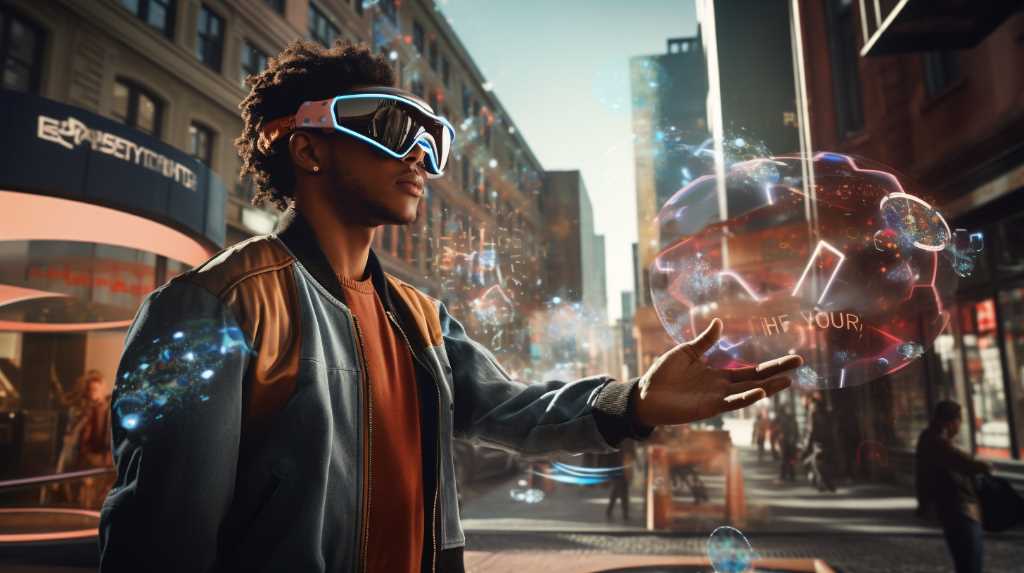 Immerse yourself in the world of augmented reality as landmarks come to life before your eyes. With immersive landmark recognition, navigating through unfamiliar environments becomes a breeze. Gone are the days of getting lost or relying solely on static maps. Augmented reality technology now allows you to easily identify and interact with landmarks in real-time.
Imagine walking down a bustling city street, and as you look through your smartphone or smart glasses, you see virtual markers hovering above various buildings and landmarks. These markers provide you with useful information such as the name of the landmark, historical facts, and even ratings and reviews from other users. You can simply tap on the marker to access additional details or even leave your own review.
Additionally, immersive landmark recognition can also enhance wayfinding by providing dynamic directions. As you move closer to a specific landmark, the marker can change color or size to indicate your proximity. It can even guide you along the most efficient route, taking into account real-time traffic conditions or public transportation schedules.
With augmented reality's immersive landmark recognition, exploring new places becomes an exciting adventure. It brings the world to life, making navigation and wayfinding more intuitive and personalized than ever before.
Immerse yourself in the world of augmented reality as landmarks come to life before your eyes. With immersive landmark recognition, navigating through unfamiliar environments becomes a breeze. Gone are the days of getting lost or relying solely on static maps. Augmented reality technology now allows you to easily identify and interact with landmarks in real-time.
Imagine walking down a bustling city street, and as you look through your smartphone or smart glasses, you see virtual markers hovering above various buildings and landmarks. These markers provide you with useful information such as the name of the landmark, historical facts, and even ratings and reviews from other users. You can simply tap on the marker to access additional details or even leave your own review.
Additionally, immersive landmark recognition can also enhance wayfinding by providing dynamic directions. As you move closer to a specific landmark, the marker can change color or size to indicate your proximity. It can even guide you along the most efficient route, taking into account real-time traffic conditions or public transportation schedules.
With augmented reality's immersive landmark recognition, exploring new places becomes an exciting adventure. It brings the world to life, making navigation and wayfinding more intuitive and personalized than ever before.
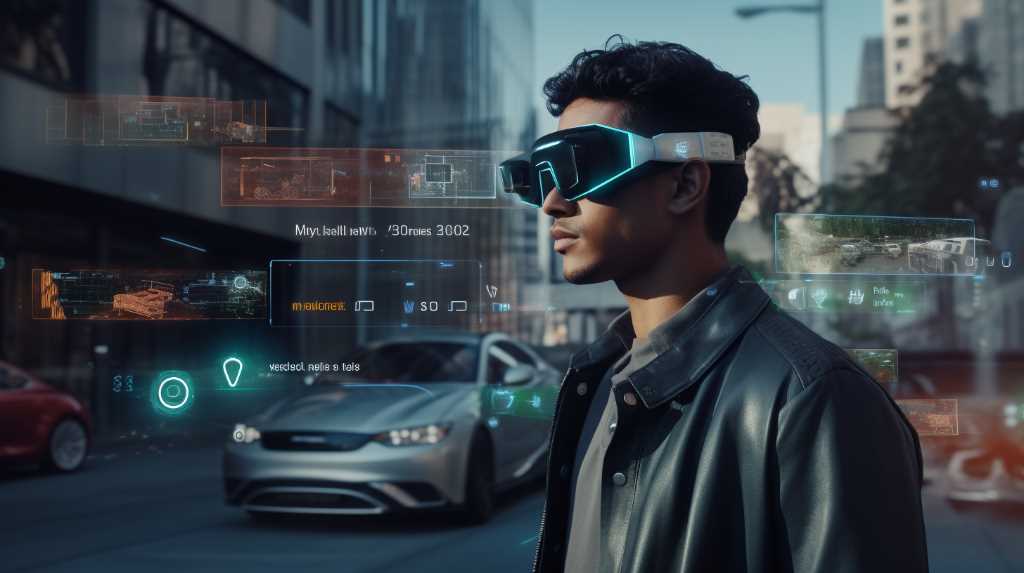 Now let's talk about the benefits of dynamic traffic information in augmented reality navigation. With real-time traffic updates, you can stay informed about any delays or congestion on your route, allowing you to make better decisions and choose alternative paths if necessary. Additionally, interactive route customization enables you to modify your journey based on the traffic conditions, ensuring a smoother and more efficient travel experience.
Now let's talk about the benefits of dynamic traffic information in augmented reality navigation. With real-time traffic updates, you can stay informed about any delays or congestion on your route, allowing you to make better decisions and choose alternative paths if necessary. Additionally, interactive route customization enables you to modify your journey based on the traffic conditions, ensuring a smoother and more efficient travel experience.
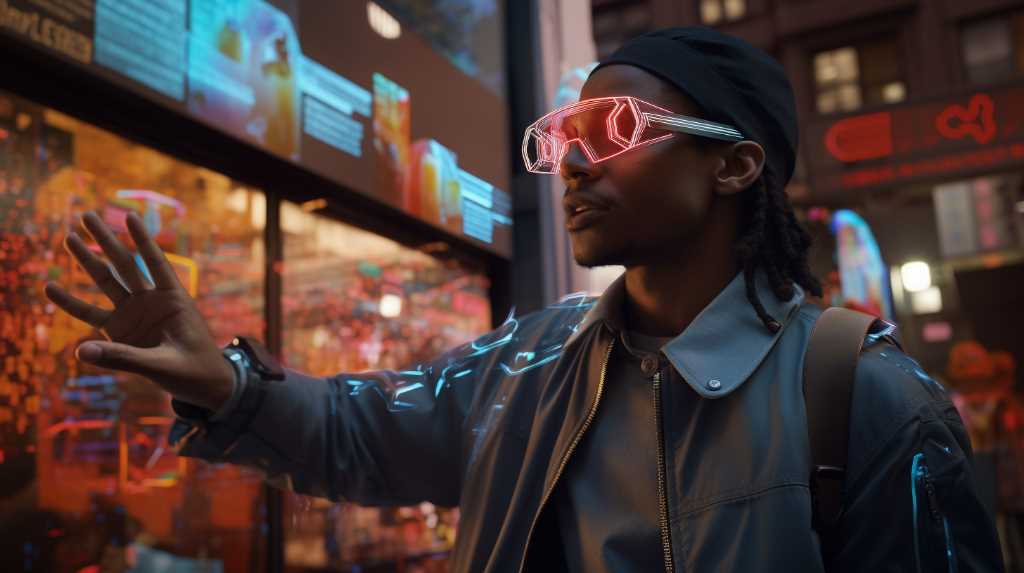 When it comes to personalized wayfinding experiences, there are several key points to consider. First, customized route recommendations can be incredibly helpful in ensuring you reach your destination efficiently and effectively.
Secondly, real-time location tracking allows you to stay on track and make adjustments as needed. Lastly, interactive landmark identification can enhance your navigation experience by providing additional context and points of interest along your route.
When it comes to personalized wayfinding experiences, there are several key points to consider. First, customized route recommendations can be incredibly helpful in ensuring you reach your destination efficiently and effectively.
Secondly, real-time location tracking allows you to stay on track and make adjustments as needed. Lastly, interactive landmark identification can enhance your navigation experience by providing additional context and points of interest along your route.
Key Takeaways
- AR technology provides real-time navigation and directions through virtual overlays on the real world, allowing users to keep their eyes on the surroundings while navigating.
- Interactive navigation in AR allows users to engage with virtual elements, customize their routes, and have more control over their navigation experience.
- AR applications provide real-time information about nearby points of interest, eliminating the need for traditional maps or search engines.
- AR enhances route planning by providing real-time visual information, alternative route suggestions, and real-time traffic updates, improving efficiency and accuracy in navigation.
Real-time Directions
 You can receive real-time directions through augmented reality (AR) technology. With AR, navigating unfamiliar places becomes easier and more efficient. Imagine walking down a crowded city street, trying to find a specific location. Instead of constantly referring to a map or GPS on your phone, AR allows you to simply look through your device's camera and see virtual, interactive directions overlaid on the real world. This means you can keep your eyes on the surroundings while receiving step-by-step guidance.
AR navigation apps, such as Google Maps or Apple Maps, use the power of AR to provide you with an immersive and intuitive navigation experience. They can show you arrows or markers on the screen, indicating the direction you should go, as well as distance indicators to let you know how far away your destination is. Some apps even use visual cues, like virtual signs or landmarks, to help you make turns or identify points of interest.
Not only does AR technology provide real-time directions, but it can also adapt to your movements and update the directions accordingly. For example, if you miss a turn, the AR navigation app will quickly recalculate the route and guide you back on track. This dynamic feature ensures that you always have the most accurate and up-to-date directions available.
You can receive real-time directions through augmented reality (AR) technology. With AR, navigating unfamiliar places becomes easier and more efficient. Imagine walking down a crowded city street, trying to find a specific location. Instead of constantly referring to a map or GPS on your phone, AR allows you to simply look through your device's camera and see virtual, interactive directions overlaid on the real world. This means you can keep your eyes on the surroundings while receiving step-by-step guidance.
AR navigation apps, such as Google Maps or Apple Maps, use the power of AR to provide you with an immersive and intuitive navigation experience. They can show you arrows or markers on the screen, indicating the direction you should go, as well as distance indicators to let you know how far away your destination is. Some apps even use visual cues, like virtual signs or landmarks, to help you make turns or identify points of interest.
Not only does AR technology provide real-time directions, but it can also adapt to your movements and update the directions accordingly. For example, if you miss a turn, the AR navigation app will quickly recalculate the route and guide you back on track. This dynamic feature ensures that you always have the most accurate and up-to-date directions available.
Interactive Navigation
 AR technology enhances navigation and wayfinding by providing interactive features that allow you to actively engage with your surroundings. With interactive navigation, you have the ability to interact with virtual elements superimposed on the real world, making your navigation experience more immersive and intuitive.
One of the key features of interactive navigation is the ability to access additional information about your surroundings. For example, when you point your device at a landmark or a building, AR can provide you with real-time information about its history, opening hours, or even reviews from other users. This allows you to make more informed decisions and enhances your overall navigation experience.
Another interactive feature of AR navigation is the ability to customize your route. You can choose to add waypoints, avoid certain areas, or even explore alternate routes. This level of customization gives you more control over your navigation and allows you to plan your journey according to your preferences or specific needs.
Furthermore, interactive navigation can also provide you with real-time feedback and guidance. AR overlays can highlight points of interest, direct you towards the correct path, or even provide step-by-step instructions. This interactive guidance ensures that you stay on track and reach your destination efficiently.
AR technology enhances navigation and wayfinding by providing interactive features that allow you to actively engage with your surroundings. With interactive navigation, you have the ability to interact with virtual elements superimposed on the real world, making your navigation experience more immersive and intuitive.
One of the key features of interactive navigation is the ability to access additional information about your surroundings. For example, when you point your device at a landmark or a building, AR can provide you with real-time information about its history, opening hours, or even reviews from other users. This allows you to make more informed decisions and enhances your overall navigation experience.
Another interactive feature of AR navigation is the ability to customize your route. You can choose to add waypoints, avoid certain areas, or even explore alternate routes. This level of customization gives you more control over your navigation and allows you to plan your journey according to your preferences or specific needs.
Furthermore, interactive navigation can also provide you with real-time feedback and guidance. AR overlays can highlight points of interest, direct you towards the correct path, or even provide step-by-step instructions. This interactive guidance ensures that you stay on track and reach your destination efficiently.
Spatial Awareness
 With AR technology, you can gain a better understanding of your physical surroundings and navigate with enhanced spatial awareness. Augmented Reality allows you to overlay digital information onto the real world, providing you with a more immersive and interactive navigation experience. By using your smartphone or wearable device, you can access real-time information such as directions, points of interest, and even virtual road signs that appear directly in your line of sight. This not only helps you navigate more efficiently but also increases your awareness of the surrounding environment.
AR technology can enhance your spatial awareness by providing you with 3D visualizations of your surroundings. For example, when walking in a new city, you can use AR to see virtual arrows pointing you in the right direction, or even virtual footprints guiding you along a specific path. This interactive navigation experience allows you to better understand the layout of the area and make informed decisions about which direction to go.
Moreover, AR technology can also assist you in locating specific objects or places within your physical surroundings. For instance, you can use AR to find the nearest coffee shop or locate a specific store in a shopping mall. By overlaying this information onto your real-world view, AR helps you navigate more efficiently and saves you time and effort.
With AR technology, you can gain a better understanding of your physical surroundings and navigate with enhanced spatial awareness. Augmented Reality allows you to overlay digital information onto the real world, providing you with a more immersive and interactive navigation experience. By using your smartphone or wearable device, you can access real-time information such as directions, points of interest, and even virtual road signs that appear directly in your line of sight. This not only helps you navigate more efficiently but also increases your awareness of the surrounding environment.
AR technology can enhance your spatial awareness by providing you with 3D visualizations of your surroundings. For example, when walking in a new city, you can use AR to see virtual arrows pointing you in the right direction, or even virtual footprints guiding you along a specific path. This interactive navigation experience allows you to better understand the layout of the area and make informed decisions about which direction to go.
Moreover, AR technology can also assist you in locating specific objects or places within your physical surroundings. For instance, you can use AR to find the nearest coffee shop or locate a specific store in a shopping mall. By overlaying this information onto your real-world view, AR helps you navigate more efficiently and saves you time and effort.
Point of Interest Identification
 By using augmented reality technology, you can easily identify points of interest in your surroundings. Augmented reality (AR) applications can provide you with real-time information about nearby points of interest, such as restaurants, landmarks, hotels, and shops. These applications use your smartphone or AR glasses to overlay digital information onto the real world, making it easier for you to find what you're looking for.
With AR, you no longer have to rely on traditional maps or search engines to find points of interest. Instead, you can simply point your device at your surroundings, and relevant information will appear on your screen. For example, if you're in a new city and want to find a good restaurant, you can use an AR app to see the names, ratings, and menus of nearby restaurants overlaid onto the real world.
Furthermore, AR can enhance your point of interest identification by providing additional context and details. For instance, you can learn about the history of a landmark by simply pointing your device at it. AR can also provide you with directions and navigation cues, making it easier for you to reach your desired point of interest.
By using augmented reality technology, you can easily identify points of interest in your surroundings. Augmented reality (AR) applications can provide you with real-time information about nearby points of interest, such as restaurants, landmarks, hotels, and shops. These applications use your smartphone or AR glasses to overlay digital information onto the real world, making it easier for you to find what you're looking for.
With AR, you no longer have to rely on traditional maps or search engines to find points of interest. Instead, you can simply point your device at your surroundings, and relevant information will appear on your screen. For example, if you're in a new city and want to find a good restaurant, you can use an AR app to see the names, ratings, and menus of nearby restaurants overlaid onto the real world.
Furthermore, AR can enhance your point of interest identification by providing additional context and details. For instance, you can learn about the history of a landmark by simply pointing your device at it. AR can also provide you with directions and navigation cues, making it easier for you to reach your desired point of interest.
Enhanced Route Planning
 You can now experience more efficient and accurate route planning by using augmented reality technology. Augmented reality (AR) enhances route planning by providing real-time visual information and guidance on your surroundings. With AR, you can view your intended route overlaid on the real world, allowing for better understanding and visualization of your journey.
One of the key benefits of AR in route planning is the ability to see alternative routes and compare them in real-time. By simply pointing your device towards your destination, AR can display multiple route options, taking into account factors such as traffic conditions, road closures, and even weather conditions. This allows you to make informed decisions on the best route to take, saving you time and avoiding unnecessary delays.
AR also enhances route planning by providing contextual information along your journey. As you navigate, AR can display relevant points of interest, such as landmarks, restaurants, and gas stations, enabling you to make pit stops or explore nearby attractions without deviating too far from your original route.
Furthermore, AR can provide live navigation instructions through visual cues overlaid on the real world. Instead of relying solely on audio instructions, AR can project arrows, street names, and distance markers directly onto the road or buildings, ensuring that you never miss a turn or exit.
You can now experience more efficient and accurate route planning by using augmented reality technology. Augmented reality (AR) enhances route planning by providing real-time visual information and guidance on your surroundings. With AR, you can view your intended route overlaid on the real world, allowing for better understanding and visualization of your journey.
One of the key benefits of AR in route planning is the ability to see alternative routes and compare them in real-time. By simply pointing your device towards your destination, AR can display multiple route options, taking into account factors such as traffic conditions, road closures, and even weather conditions. This allows you to make informed decisions on the best route to take, saving you time and avoiding unnecessary delays.
AR also enhances route planning by providing contextual information along your journey. As you navigate, AR can display relevant points of interest, such as landmarks, restaurants, and gas stations, enabling you to make pit stops or explore nearby attractions without deviating too far from your original route.
Furthermore, AR can provide live navigation instructions through visual cues overlaid on the real world. Instead of relying solely on audio instructions, AR can project arrows, street names, and distance markers directly onto the road or buildings, ensuring that you never miss a turn or exit.
Immersive Landmark Recognition
 Immerse yourself in the world of augmented reality as landmarks come to life before your eyes. With immersive landmark recognition, navigating through unfamiliar environments becomes a breeze. Gone are the days of getting lost or relying solely on static maps. Augmented reality technology now allows you to easily identify and interact with landmarks in real-time.
Imagine walking down a bustling city street, and as you look through your smartphone or smart glasses, you see virtual markers hovering above various buildings and landmarks. These markers provide you with useful information such as the name of the landmark, historical facts, and even ratings and reviews from other users. You can simply tap on the marker to access additional details or even leave your own review.
Additionally, immersive landmark recognition can also enhance wayfinding by providing dynamic directions. As you move closer to a specific landmark, the marker can change color or size to indicate your proximity. It can even guide you along the most efficient route, taking into account real-time traffic conditions or public transportation schedules.
With augmented reality's immersive landmark recognition, exploring new places becomes an exciting adventure. It brings the world to life, making navigation and wayfinding more intuitive and personalized than ever before.
Immerse yourself in the world of augmented reality as landmarks come to life before your eyes. With immersive landmark recognition, navigating through unfamiliar environments becomes a breeze. Gone are the days of getting lost or relying solely on static maps. Augmented reality technology now allows you to easily identify and interact with landmarks in real-time.
Imagine walking down a bustling city street, and as you look through your smartphone or smart glasses, you see virtual markers hovering above various buildings and landmarks. These markers provide you with useful information such as the name of the landmark, historical facts, and even ratings and reviews from other users. You can simply tap on the marker to access additional details or even leave your own review.
Additionally, immersive landmark recognition can also enhance wayfinding by providing dynamic directions. As you move closer to a specific landmark, the marker can change color or size to indicate your proximity. It can even guide you along the most efficient route, taking into account real-time traffic conditions or public transportation schedules.
With augmented reality's immersive landmark recognition, exploring new places becomes an exciting adventure. It brings the world to life, making navigation and wayfinding more intuitive and personalized than ever before.
Dynamic Traffic Information
 Now let's talk about the benefits of dynamic traffic information in augmented reality navigation. With real-time traffic updates, you can stay informed about any delays or congestion on your route, allowing you to make better decisions and choose alternative paths if necessary. Additionally, interactive route customization enables you to modify your journey based on the traffic conditions, ensuring a smoother and more efficient travel experience.
Now let's talk about the benefits of dynamic traffic information in augmented reality navigation. With real-time traffic updates, you can stay informed about any delays or congestion on your route, allowing you to make better decisions and choose alternative paths if necessary. Additionally, interactive route customization enables you to modify your journey based on the traffic conditions, ensuring a smoother and more efficient travel experience.
Real-Time Traffic Updates
Get instant updates on traffic conditions with augmented reality navigation. Augmented reality (AR) can revolutionize the way you navigate through traffic by providing real-time traffic updates. With AR technology, you can receive dynamic traffic information directly on your device, allowing you to make informed decisions on the go. Imagine being able to see the current traffic conditions overlayed on your windshield or displayed on your smartphone screen as you drive. AR navigation systems can analyze traffic data from various sources, such as GPS trackers and traffic cameras, and present it in a visually intuitive way. This technology not only helps you avoid congested areas but also suggests alternative routes to reach your destination faster. By utilizing real-time traffic updates through augmented reality, you can make your daily commutes more efficient and stress-free.Interactive Route Customization
Can you easily customize your route and receive dynamic traffic information with augmented reality navigation? With the advancements in augmented reality (AR) technology, interactive route customization has become a reality. By using AR navigation apps, you can now have more control over your route planning. These apps allow you to input your desired destinations and choose the most convenient and efficient routes based on real-time traffic updates. The dynamic traffic information provided by these apps helps you avoid congested areas and find alternative routes to save time. Moreover, AR navigation apps also provide turn-by-turn directions and real-time updates on road conditions, accidents, and construction work. This interactive route customization feature enhances your navigation experience by empowering you to make informed decisions and reach your destination efficiently.Personalized Wayfinding Experience
 When it comes to personalized wayfinding experiences, there are several key points to consider. First, customized route recommendations can be incredibly helpful in ensuring you reach your destination efficiently and effectively.
Secondly, real-time location tracking allows you to stay on track and make adjustments as needed. Lastly, interactive landmark identification can enhance your navigation experience by providing additional context and points of interest along your route.
When it comes to personalized wayfinding experiences, there are several key points to consider. First, customized route recommendations can be incredibly helpful in ensuring you reach your destination efficiently and effectively.
Secondly, real-time location tracking allows you to stay on track and make adjustments as needed. Lastly, interactive landmark identification can enhance your navigation experience by providing additional context and points of interest along your route.

